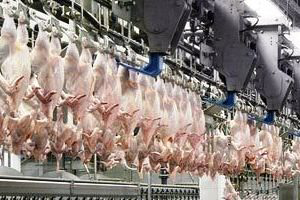BPC examines the two sides of poultry inspection

The current focus on practices in poultry plants has thrown rather an unfair light on the role of official inspection, writes the British Poultry Council in light of allegations in The Guardian newspaper of unhygienic practices in poultry plants.
With a full time presence in large plants there has been expressed an expectation that those professionals have the ability to oversee everything. This is far from the truth, the BPC continues.
It is the responsibility of the Food Business Operator (FBO) to produce safe food. This includes having systems in place that quickly identify and correct failures that occur, whether that failure is in machinery or how employees conduct themselves. The official veterinarian, while he or she may be the one to spot an error, has an advisory and enforcement role. It is a system that supports the work of responsible FBOs and penalises consistent poor performance. It is one industry has faith in and values as an important part of food production.
There is another side to inspection that is in need of attention, of microbiological safety. It is an area where science and knowledge has vastly overtaken legislation. Existing European legislation on poultry meat inspection is based on a visual system. In essence, a person watching 10,000 birds an hour go past. Visual assessment will remain an important tool in checking bird health and welfare, identifying failures in the process, and ensuring quality requirements are met. However, we now know that food safety risks in poultry production are predominantly microbiological. This can’t be seen with the naked eye, and must be assessed by rigorous sampling and testing regimes.
There are legislative controls on the majority of pathogens associated with meat and poultry production, although not yet on campylobacter, and these are applied on the farm and in the slaughterhouse. Campylobacter controls across Europe are essentially voluntary. The British industry has taken the collective decision to drive forward on campylobacter controls, and it is leading the way on developing techniques and technologies to deal with the issue.
Across Europe, industry is calling on the Commission to change its outdated legislation to be risk-based and flexible enough to match developing knowledge and technology on campylobacter. What is needed is to focus resources where they can have the greatest effect in ensuring safe food.
At its best, legislation supports and enables an FBO to produce and deliver an optimum product to consumers. At its worst it can be a barrier to best practice, a regulatory “computer says no”.
FBO responsibility and official inspection are two sides of the same coin, and either one should not be debated in isolation. Both are responsible and professional, and can contribute to campylobacter reduction. We have an opportunity now to have an open and honest review of the tools we need.
Source: British Poultry Council













